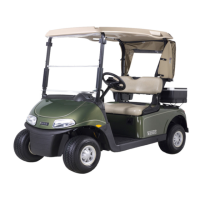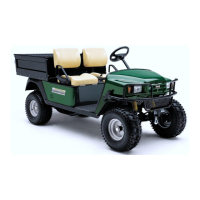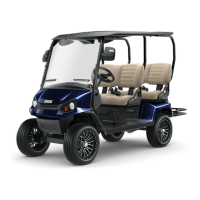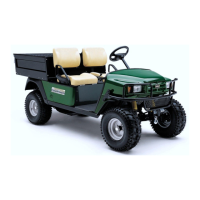B
OPERATING PROCEDURES
Read all of SAFETY and this section before attempting any procedure. Pay particular attention to Notices, Cautions, Warnings and Dangers.
33
Owner’s Manual
Starting Vehicle On A Hill
To decrease the risk of roll-back, do not release the brake until the engine has started.
Do not use the accelerator and engine to hold the vehicle on a hill. Doing so will cause early and excessive
wear to the drive train components.
To decrease the risk of permanent damage to the drive train, do not allow roll-back when you start the vehicle
on a hill.
Put left foot on brake and release the parking brake. Press the accelerator with right foot and release the brake.
Coasting
Do not allow the vehicle to coast at above recommended speeds. Control vehicle speed with the
brake.
Steep hills allow the vehicle to move at faster speeds than speeds on a flat surface. To prevent the loss of vehicle control
and possible injury, speeds must be controlled to the maximum level ground speed indicated in the GENERAL SPECIFI-
CATIONS section. Apply the brake to control the speed.
FUEL
To decrease the risk of severe injury or death from improper fuel handling:
Do not smoke near the fuel tank.
Do not add fuel near open flame or electrical items that can cause a spark.
Always handle gasoline in a well ventilated area.
Always wear eye protection to protect against splashed fuel and fuel vapors.
Inspect the fuel cap, tank and other components for leaks or damage that can cause a hazardous
condition.
Oxygenated or reformulated gasoline, is mixed with alcohols or ethers. Excessive amounts of these blends
can damage the fuel system or cause performance problems. If any operating problems occur, use gasoline
with a lower percentage of alcohol or ether.
Use clean regular grade unleaded fuel. The Ethanol blend fuel up to 10% is permitted.

